My favorite pastries in the world are Portuguese mil folhas. After recently researching them for my novel, Hearts Never Lie, I decided to make these tasty pastries myself. I did try making mil folhas once before using packaged puff pastry, but it really didn’t work out that great.
This time I planned to make my own puff pastry. And that turned out to be the easiest part of it. I apologize ahead of time for the mixed measurements, but we are a American/European blended family and we use cups and ounces or grams and liters with equal preference.
(Note: after reading this please see my second try here.)
For my puff pastry I used this recipe
1 kilo of flour
600 ml of water
750 grams of butter with no salt
10 grams of salt
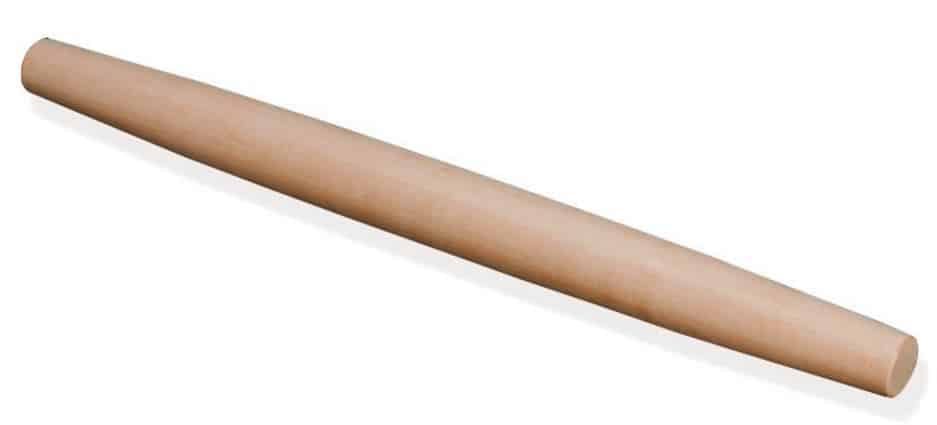 Now I’m not going into details here about how I did it (because I’m no expert), but I mixed up everything except the butter, which I had pounded into about a 12 inch by 12 inch square with my handy-dandy new rolling pin, bought for this purpose, and put into the refrigerator. Then I rolled out the dough, placed the butter on it and folded it over. Then I did a series of 5 “folds,” putting the dough in the refrigerator for 30 minutes between each fold. If you don’t know what a fold is, you need more help than I can give you. Some sites said to fold it in three and some said like a book. I did both for good measure.
Now I’m not going into details here about how I did it (because I’m no expert), but I mixed up everything except the butter, which I had pounded into about a 12 inch by 12 inch square with my handy-dandy new rolling pin, bought for this purpose, and put into the refrigerator. Then I rolled out the dough, placed the butter on it and folded it over. Then I did a series of 5 “folds,” putting the dough in the refrigerator for 30 minutes between each fold. If you don’t know what a fold is, you need more help than I can give you. Some sites said to fold it in three and some said like a book. I did both for good measure.
So my daughters and I cooked the pastry in three half sheets and it was perfect. Except we “poked” it a bit too much while cooking, so it was a little too flat in the end (we were worried about it growing too high). And we didn’t quite cook it enough.
Bottom line, it took a while, but was relatively easy.
The filling for my Portuguese mil folhas
The filling was another matter. I made one recipe with a dozen egg yolks, a liter of milk, vanilla, and 80 grams of cornstarch, and it was delicious, but NOT AT ALL like real Portuguese mil folhas. It tasted like custard and Portuguese mil folhas in the area I buy them from (Lisbon) do not taste like custard.
So I put that away in the refrigerator, and one of my daughters found a new recipe, which basically had another dozen egg yolks, but only 1/3 cup of milk and 20 grams of cornstarch, and added 2/3 cup water. The color was much closer to the real mil folhas, but that might never be achieved because all the eggs I’ve ever seen in Portugal have a much deeper color of egg yolk. It even tasted a lot more like them, but it was still off. Nevertheless, we plunged ahead.
We put on the first layer of filling
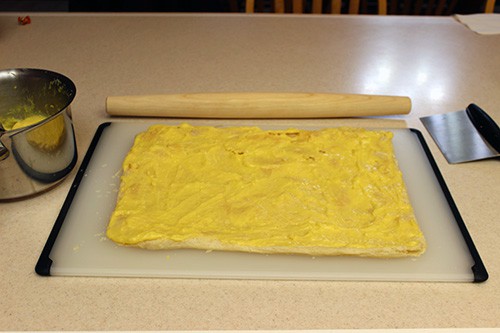
Then we put on the next layer of pastry, more filling, and the final layer of pastry.
We frosted the top pastry layer
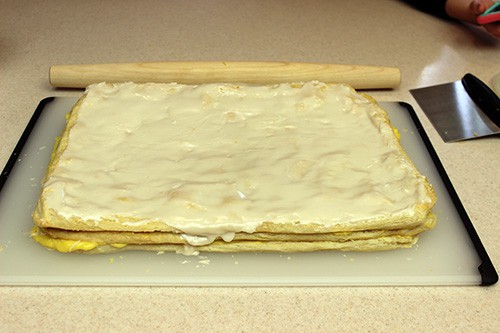
Here I made a mistake of putting vanilla in the powdered sugar topping, so it was darker than it should have been.
We added the chocolate decoration
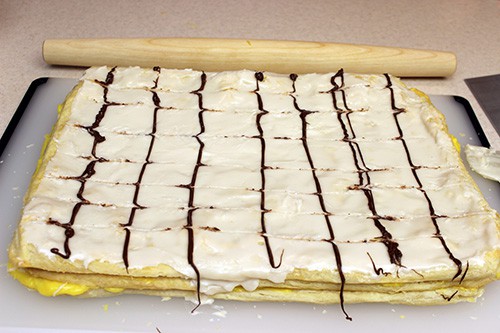
Oops, we didn’t quite put enough chocolate lines or make the lines thick enough. Mostly this was because we’ve never done it before and we didn’t have the right equipment to place the chocolate. We were supposed to mix the chocolate with some of the white frosting, and it would have been easier if we had. At this point, we just wanted to be finished and eating them!
We cut them
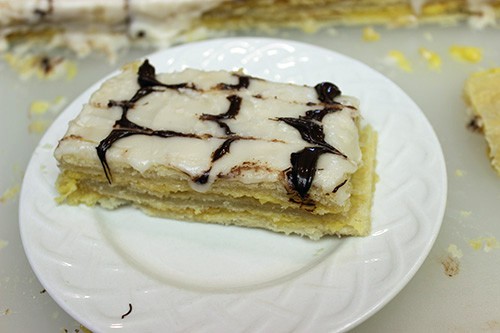
My daughter put on more chocolate that was already hardening.
How did they taste?
On a scale of 1-10, I’d put these at a two that first night. The next day they actually tasted better, so maybe a 3 or 4. Not bad, mind you, but just not great and DEFINITELY NOT like the real thing. It was a bit of a disappointment to me. My five-year-old loves them, however, so they won’t go to waste.
What do I go from here?
The next time I’m visiting my mother-in-law in Portugal, I’m going to my favorite cafe where they make the mil folhas in-house and I’m going to BEG them to show me how. I’ll tell them it’s for my book—and I will definitely update the novel with anything I might learn.
We usually go to Portugal every three years, but its been four now since our last trip. So hopefully, I’ll be able to update this blog with a new, more successful venture into mil folhas before the end of the year.
(Update: we tried it again with a lot better results that you can see here.)
This is what they are supposed to look like
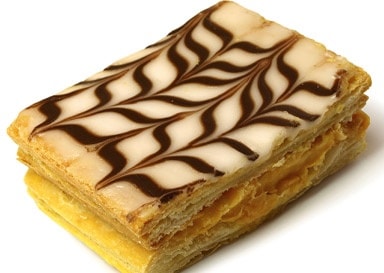
If you know how to make Portuguese mil folhas the Lisbon, Portugal way, I’d love to hear from you!
![]()
Copyright 2017 Teyla Rachel Branton
Reuse notice: you are free to print for personal use or non-commercial use with friends, share this post link anywhere, quote a short excerpt with attribution and a link to this site, but you may not use this post in its entirety on your own page. Thank you for caring about copyright.



Mia
Did you buy your eggs at the grocery store? I buy mine from the local feed store and the egg yolks are a much deeper yellow since the eggs are fresher and raised small scale. This makes a huge difference in the color of finished products like custards and curds.
Teyla Rachel Branton
Yeah, I just bought them at the regular grocery, but I wondered about that. My sister raises chickens. I’ll have to snag a few of her eggs and give it another go. Thanks for the comment!
Essie Munro
Teyla: the mil folhas look quite yummy in your photos. Actually they look quite similar to vanilla slices, just a slightly different filling. And Paul is right, there are differences in ingredients between different countries. When we moved to Australia from Canada, I found the flour here in Oz quite different. Had to do some tweaking to get the right results.
Teyla Rachel Branton
The flour in Portugal does seem to have baking powder (soda?) in it, so when I made their yogurt cake, I have to add my baking powder here and a cup of milk! It’s possible that the custard mixture has something similar. I have plans to watch them make it!
Cathy Davidson
Well done on your first try to make the yummy pastry! I swear I am going to give it a go…lol…Cath
Teyla Rachel Branton
Let me know if you do!
Cathy Davidson
Will Do!! :o)
Paul Landry
Differences in end results can be caused by the ingredients used. What you buy in North America may have a slightly different composition. The butter used will make a difference. The filling also has an impact on the final product. The first attempts do not always result in perfection. With practice the folhas will get better. If your daughter likes them, then the trial was a success, to me they are the best judges, they are honest.
Teyla Rachel Branton
Good point. The flour in Portugal has some kind of baking powder in it, BUT all the recipes for the pastry dough said it didn’t have it. The biggest problem is the filling. If I can just get that right! And Lisbon is eating them, so that at least was a success.
Paul Landry
Discrepancies in the make-up of ingredients will change the result no manner how minor they may be. Europe and North America follow similar but different ways to prepare ingredients, thus different results. On to children: No one in the world can make you feel like a million bucks without trying like a child can. Adult are their idols, that is why they ask for anything because they think you can get it for them.
Teyla Rachel Branton
You were right, Paul. The second try is much better! http://teylarachelbranton.com/portuguese-pastry-mil-folhas-part-2/.
As for kids, I’m trying to enjoy mine while I have them here. They can make you feel like a million bucks!
Sheila Hutchinson
For a first time, I think they look pretty good. Since I can’t give an opinion on taste, especially since I’ve never ate let alone seen a mil folhas , I’ll take your and Lisbon’s word for them. I can’t wait to read updates on how they turn out. I hope that you get to return to Portugal soon and that the bakery grants your wish, I mean your begging. Take care!!!
Teyla Rachel Branton
Thanks, Sheila. Seriously, I have to learn how to do this! They MIGHT teach me since I’m in America and not likely to be competition . . .